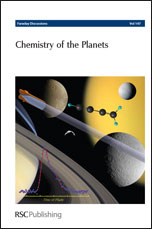Polycyclic aromatic hydrocarbons (PAHs) are believed to be responsible for the formation of organic haze layers in Titan's atmosphere, but the nature of PAHs on Titan and their formation and growth mechanisms are not well understood. Considering the high abundance of nitrogen in Titan's atmosphere, it is likely that the haze layers hold not only pure hydrocarbon PAHs but also their nitrogenated analogs, N-containing polycyclic aromatic compounds (N-PACs) with ‘hetero’ N atoms in aromatic rings. Laboratory studies of Titan's tholins also support the hypothesis that, together with pure PAHs and their cations, N-PACs may be the fundamental building blocks of microphysical tholin particles. In the present work, we carried out ab initio quantum chemical calculations of potential energy surfaces for various reaction mechanisms of incorporation of nitrogen atoms into aromatic rings of polycyclic aromatic compounds, which may lead to the formation of N-PACs under the low-temperature and low-pressure conditions of Titan's atmosphere. This includes mechanisms analogous to the Ethynyl Addition Mechanism (EAM) recently proposed by us for the growth of PAH by sequential C2H additions to benzene. We consider consecutive C2H and CN additions to C6H6, C6H6 + CN → C6H5CN + H, C6H5CN + C2H → C6H4(CN)(C2H) + H, C6H5CN + CN → C6H4(CN)2 + H, C6H4(CN)(C2H) + C2H → 2-aza-4-ethynyl-1-naphthyl/2-aza-1-ethynyl-4-naphthyl, C6H4(CN)2 + C2H → C6H4(CN)(NCCCH), and C6H4(CN)(NCCCH) + C2H → 1,4-diethynylphthalazine. Although these reactions are found to be barrierless and exothermic and therefore feasible at low temperatures, the steps leading to the aza-ethynyl-naphthyl radicals, C6H4(CN)(NCCCH), and 1,4-diethynylphthalazine can give N-PACs as final products only upon their collisional or radiational stabilization. Alternatively, an N-PAC can be synthesized via the reaction of 2-methyleneaminobenzonitrile with C2H, producing 4-ethynyl-quinoline + H without an entrance barrier via a three-step sequence including C2H addition to C of CN, ring closure, and H elimination. 2-Methyleneaminobenzonitrile itself can be formed in the reaction of methyleneaminobenzene with cyano radical, C6H5(NCH2) + CN → C6H5(NCH2)(CN) → C6H4(NCH2)(CN) + H, which also does not have any entrance barrier. Methyleneaminobenzene can be produced through recombination of phenyl and methylene-amidogen radicals followed by collisional stabilization of the product, via the barrierless C6H5 + CH3N → C6H5(NCH3) → C6H5(NCH2) + H reaction, or in the reaction of phenyl with methyleneimine, C6H5 + CH2NH → C6H5(NHCH3) → C6H5(NCH2) + H. The latter would be slow at low-temperature conditions owing to the barriers of 4.5 and 2.8 kcal mol−1 relative to the initial reactants, but feasible if the reactants possess sufficient internal energy to overcome these barriers. We anticipate that the presented mechanisms are viable to form N-PACs in hydrocarbon and nitrogen rich, low temperature atmospheres of planets and their moons such as Titan.

 Please wait while we load your content...
Please wait while we load your content...